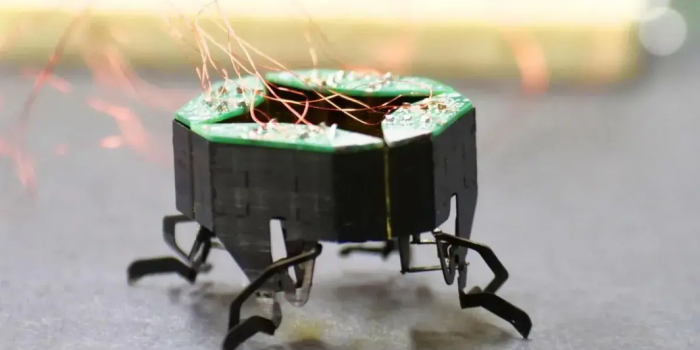Meet CLARI, a remarkable robot with a knack for metamorphosis, inspired by the world of insects. Smaller than your palm and lighter than a Ping Pong ball, this shape-shifting marvel from the University of Colorado, Boulder, is poised to redefine the boundaries of robotics.
CLARI’s unique abilities could revolutionize disaster response operations and open doors to uncharted territories, making it a true standout in the world of mechanical innovation. Heiko Kabutz, a doctoral candidate at CU Boulder’s Paul M. Rady Department of Mechanical Engineering, emphasized CLARI’s adaptability, stating, “CLARI’s passive ability to adapt to its environment positions it as an ideal candidate for roles we haven’t even envisioned yet.”
CLARI’s current four-legged design is intentionally modular, allowing for various modifications, including the addition of extra legs. Kabutz envisions an eight-legged, spider-inspired robot with the potential to navigate complex webs, highlighting the versatility offered by this modular approach.

Despite its potential, CLARI currently relies on tethered wires for power and basic commands. Assistant Professor Kaushik Jayaram, a co-author of the study, envisions a future where these miniature robots can operate autonomously. His aspiration is to develop robots capable of exploring uncharted territories, such as the interiors of jet engines or the debris-filled spaces of collapsed buildings.
Jayaram challenges the conventional cubic robot structure and draws inspiration from the animal kingdom’s diverse forms, posing, “Animals come in a myriad of forms; why should robots be any different?”
Before CLARI, Jayaram designed a robot at the University of California, Berkeley, inspired by a cockroach’s ability to navigate tight vertical spaces. He sees this as just the beginning, explaining, “The animal world offers a plethora of design inspirations. Why limit ourselves to mimicking only one method of adapting to confined spaces?”
CLARI extends this philosophy by focusing on maneuvering through horizontal gaps, with the ability to adjust its width from 34 millimeters to a slim 21 millimeters, providing it with a wide range of motion and adaptability.

The researchers have plans to integrate sensors into CLARI, enabling it to autonomously detect and avoid obstacles. Additionally, they are conducting ongoing research to strike the right balance between flexibility and strength, especially when adding more legs to the robot.
Kabutz envisions a future where CLARI can navigate challenging natural terrains, bounce off obstructions like blades of grass, or crawl through cracks in rocks, marking a significant advancement in robotics capabilities.
The development of CLARI signifies a potential paradigm shift in robotics due to its small size, adaptability, and modular design. It holds promise as a valuable asset for first responders in disaster-stricken areas and for intricate tasks like internal engine inspections.
Kabutz aptly summarizes the potential of CLARI: “If we can build robots with the capabilities of spiders or flies, we can start to explore areas hitherto inaccessible. The sky is literally not the limit.”
For now, CLARI remains a prototype with immense potential, providing a captivating glimpse into the future of robotics, inspired by the remarkable creatures it seeks to emulate.
The study detailing CLARI was published in the journal Advanced Intelligent Systems.


